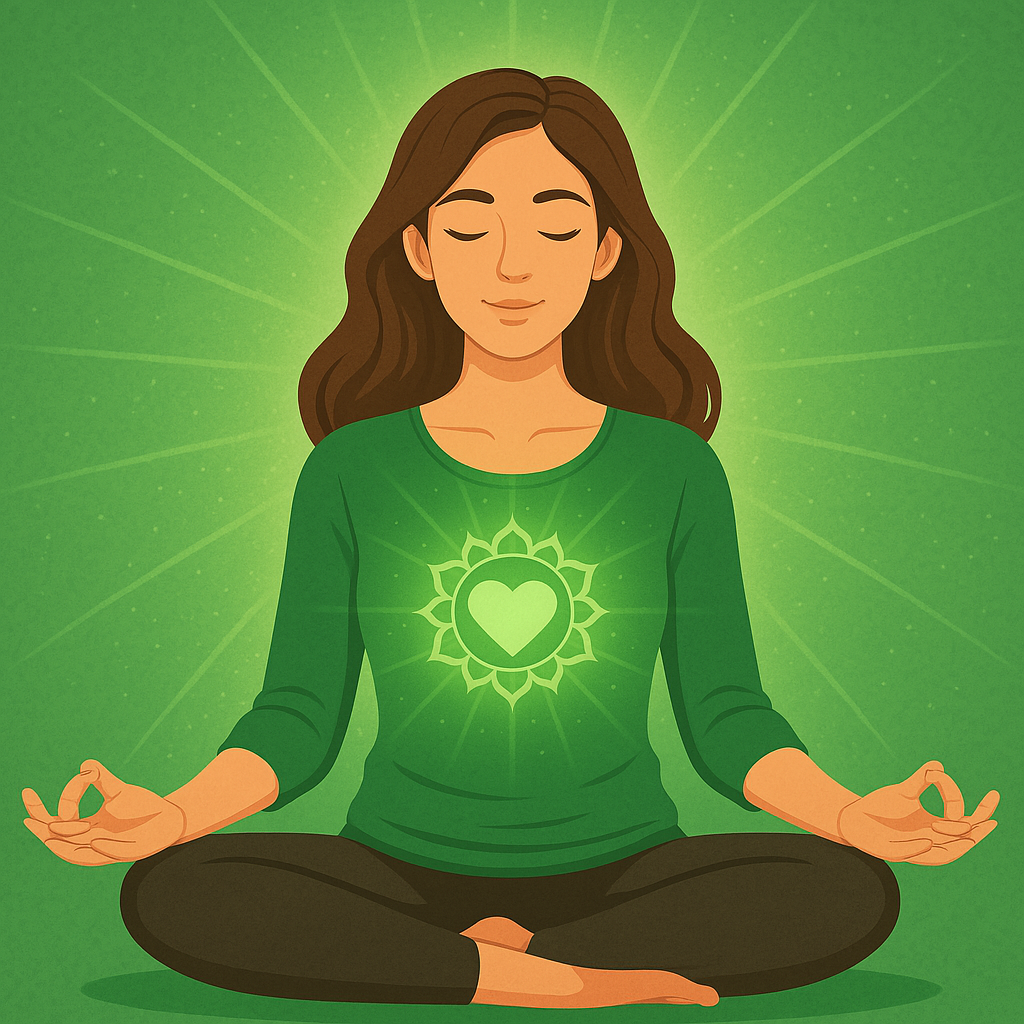Introduction
Do you ever feel disconnected—from yourself, your relationships, or the world around you? Do you long for deeper love, greater compassion, and emotional healing? If so, your heart chakra may be calling for your attention. The heart chakra, or Anahata, is the energetic center of love, empathy, and inner peace.
When balanced, it helps us form meaningful connections, forgive with ease, and live from a place of unconditional love. But when blocked, it can leave us feeling guarded, lonely, or emotionally drained.
In this article, you’ll discover powerful heart chakra meditation techniques designed to gently open and balance this vital energy center. Whether you’re new to meditation or seeking to deepen your spiritual practice, this comprehensive chakra meditation guide will show you how to access the healing power of your own heart—and invite more love, light, and harmony into your life.
Trusted Source: heart chakra guided meditation
What Is the Heart Chakra?
The heart chakra, also known as Anahata in Sanskrit, is the fourth of the seven main energy centers in the body. Located in the center of the chest, it governs our ability to give and receive love—both to ourselves and to others. The heart chakra is associated with the color green, the element air, and qualities such as compassion, kindness, forgiveness, and emotional balance.
Signs of a Balanced Heart Chakra:
- A deep sense of inner peace and connection
- The ability to love unconditionally
- Emotional openness and empathy
- Healthy, nurturing relationships
Signs of a Blocked or Imbalanced Heart Chakra:
- Fear of vulnerability or intimacy
- Holding onto past resentment
- Feeling lonely or emotionally numb
- Difficulty trusting others
Learning how to heal the heart chakra through mindful practices can open the doorway to emotional freedom, deeper relationships, and spiritual growth.
Benefits of Heart Chakra Meditation
Practicing heart chakra meditation techniques regularly provides profound emotional, spiritual, and physical benefits:
- Emotional Healing Through Meditation: Releases grief, pain, and past trauma held in the heart space.
- Open Heart Chakra: Encourages greater empathy, vulnerability, and connection.
- Increased Self-Love and Compassion: Enhances your relationship with yourself and others.
- Reduced Anxiety and Stress: Calms the nervous system by reconnecting with the energy of love.
- Green Chakra Healing: Supports lung function, circulatory health, and emotional balance.
These are just a few of the transformative benefits of heart chakra meditation you can experience through regular practice.
How to Prepare for Heart Chakra Meditation
Before beginning your practice, take a few steps to create an environment that enhances your experience.
1. Clarify Your Intention
- Ask yourself: What do I want to heal or open in my heart?
- Write your thoughts in a journal to anchor your focus.
2. Create a Heart-Centered Space
- Find a quiet, cozy place free from distractions.
- Surround yourself with calming items like candles, crystals (e.g., green aventurine or rose quartz), and soft lighting.
- Use essential oils like rose, lavender, or bergamot to promote calm and openness.
3. Engage in Gentle Movement
- Practice heart-opening yoga poses such as Cobra, Camel, or Bridge to prepare your body.
4. Choose the Best Time
- Meditate in the morning to set a loving tone or in the evening to release emotional tension.
Step-by-Step Heart Chakra Meditation Techniques
Follow this step-by-step chakra meditation to begin your healing journey.
Step 1: Ground and Center
- Sit comfortably with your spine straight.
- Inhale slowly through your nose, exhale through your mouth.
- Visualize roots growing from your body into the earth, anchoring your energy.
Step 2: Focus on the Heart Space
- Place your hands over your chest.
- Bring attention to your heartbeat and breath.
- Visualize a glowing green light—symbolizing green chakra healing—expanding with each inhale.
Step 3: Heart Chakra Breathing
- Inhale deeply into your heart, letting it expand.
- Exhale all tension and emotional heaviness.
- Try the 4-7-8 technique for deeper release and nervous system regulation.
Step 4: Visualize Love and Connection
- Imagine a joyful moment or someone you love deeply.
- Let the feelings of warmth and connection flood your chest.
- See yourself giving and receiving love freely.
Step 5: Heart Chakra Affirmations
Repeat the following affirmations:
- “I am worthy of love.”
- “Love flows through me effortlessly.”
- “I forgive myself and others.”
- “I radiate compassion and kindness.”
These powerful heart chakra affirmations help rewire negative beliefs and restore emotional balance.
Step 6: Embrace Stillness
- Sit quietly for 2–5 minutes.
- Let any feelings or insights rise naturally.
- Embrace the stillness and healing energy of your heart center.
Step 7: Close with Gratitude
- Gently bring your awareness back.
- Wiggle your fingers and toes, and open your eyes.
- Express gratitude for your practice, your heart, and your healing.
Tips to Deepen Your Anahata Meditation Practice
- Practice Daily: Consistency builds lasting emotional resilience.
- Use Sound Healing: Listen to 639 Hz music, known for heart chakra activation.
- Incorporate Crystals: Hold green stones or place them on your chest.
- Explore Guided Meditations: Use apps like Insight Timer or YouTube for Anahata meditation sessions.
- Keep a Journal: Track your emotional progress and breakthroughs.
Conclusion
Your heart holds the wisdom of connection, compassion, and boundless love. When your heart chakra is open and balanced, you become more present, more empathetic, and more aligned with your true self.
By practicing these transformative heart chakra meditation techniques, you begin the powerful journey of emotional healing through meditation. You’ll learn how to nurture forgiveness, cultivate inner peace, and truly open your heart chakra to give and receive love without fear.
So sit quietly. Breathe into your heart. Let the healing green light expand within you—and radiate it into the world.
The path to deeper love starts within. Are you ready to take the first step?

